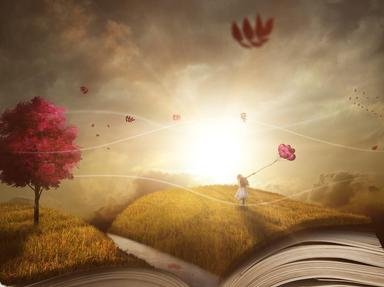Quiz Answer Key and Fun Facts
1. Charles Perrault was, in one sense, the author of the "Sleeping Beauty" fairytale, in which a beautiful princess was cursed by an evil fairy to prick her hand/finger on a spinning wheel and die. A different fairy, of course, proclaimed that the princess would only sleep.
Perrault did, however, base "Sleeping Beauty" on similar tales, especially one by Giambattista Basile. What is the title of the Basile story?
2. Another Giambattista Basile story, "The Young Slave", is about a beautiful girl who, unbeknown to her uncle, became the abused slave of her aunt, after the death of her mother.
Although "The Young Slave" features a wicked aunt, it is similar to what popular fairytale, which includes a wicked stepmother?
3. "The Glass Coffin" by the Brothers Grimm is somewhat similar to "Snow-White" and "Sleeping Beauty".
Unlike those tales though, which feature princes, who is the hero in this story?
4. "The Swan Princess" is a movie based on "Swan Lake" (the ballet).
Which of the following literary tales is NOT similar to the above, which tell of a woman turned into a swan?
5. There are several fairytales that include the similar theme of brothers being transformed into birds.
Of the choices, which one did Hans Christian Andersen write?
6. The Brothers Grimm have a tale titled "Snow-White and Rose ---" about two little girls. (This Snow-White has no relation to the black haired princess of the same name.) Interestingly, a princess in the Irish fairytale, "The Twelve Wild Geese", bears the name "Snow-White-and-Rose --". This princess shares names with three other girls!
What is the missing color?
7. Hans Christian Andersen wrote "The Little Mermaid" as an original creation, but there are different fairy and folk tails--err, I mean tales--that include relationships between mermaids and human men.
In the humorous Irish legend, "The Lady of Gollerus", the priest originally wouldn't marry Dick Fitzgerald to the mermaid, because she was, in his words, "a fish". What did the man say to convince the priest to marry them?
8. Another story about mermaids falling in love with human men is "The Merrow". The following is a quote from it, written by an Irish author.
"The male Merrows (if you can use such a phrase -- I have never heard the masculine of Merrow) have green teeth, green hair, pig's eyes, and red noses; duck-like scale between their fingers.
Sometimes they prefer, small blame to them, good-looking fishermen to their sea lovers."
Who wrote "The Merrow"?
9. The most familiar version of "Rapunzel" comes from the Brothers Grimm, but there are variations from other sources.
Which of these is NOT a variation of this fairytale?
10. "Catskin" and "Donkey Skin" are very similar tales, which in turn are similar to what? Think of the belle of the ball.
Source: Author
Ceduh
This quiz was reviewed by FunTrivia editor
looney_tunes before going online.
Any errors found in FunTrivia content are routinely corrected through our feedback system.

